Part I: When the Light First Sang
Transcribed from the Sacred Codices of the Temple of the Threefold Flame, as compiled by High Archivist Elen Qirell of Kingswatch.
“In the beginning, there was neither time nor silence, neither form nor void. There was only the Breath Unnamed. And from it came the First Sound.”
— Book of the Flameborn, Verse I:1
Let it be known that this account is not for the unready heart. It is not history in the way mortals mark years upon walls or chisel deeds into stone. No—this is mythos, the sacred marrow of the world, passed in whispers through the sacred line of archivists since before the dawning of Kingswatch, before even the First Crown, before names had meaning.
I am Elen Qirell, High Archivist of the Temple of the Threefold Flame, and I write not merely with ink, but with the reverence of generations. This is not just a story. This is how all stories began.
1
I. The Breath Unnamed
Before all, there was only the Breath. It had no voice, for voice implies opposition. It had no shape, for shape requires edges. It was not light, though from it all light would one day burst forth. We call it now the Breath Unnamed, for to name it would be to limit it, and the Breath is beyond such hubris.
The Breath was not still, but neither did it move. It was potential, the divine tension that precedes creation. It was the moment before a flame catches wick. It was the silence before the first note dares to break the void. Some texts liken it to a womb; others, a forge. I say only this: it was the sacred pause before becoming.
And then, it sang.
No tongue can speak what the First Sound was. No harp can mimic its trembling. But from that first trembling note came Light.
Not light as a torch or the sun, but a knowing, a radiant awareness that unfolded across the nothingness like petals from an infinite bloom. It did not illuminate—it revealed. In its presence, the Breath saw itself. And so the First Flame was born.
To this day, we mark the Year of the First Flame not in time, but in silence. The moment before the Song is honored yearly in the Emberfast, when no voice is lifted from dusk to dawn. The stillness is a prayer.
2
II. The First Flame and the Threefold Singing
From the Light came Flame. And from Flame came the Threefold Singing.
It is written in the Codices of Dythan’el that the Flame sang three notes, each so powerful that they echoed through the formless aether, shaping the bones of reality.
- The first note birthed Aiyal, the Flame of Creation. It was warm, fertile, and forever forward-moving. From her came growth, the swell of rivers, the hunger of stars.
- The second note summoned Orun, the Flame of Binding. He brought structure and law, giving names to things that had none. He is why stone remembers its weight and why the sky knows its height.
- The third note called forth Vael, the Flame of Endings. Cold and still, yet not evil—Vael is the whisper that all must sleep. She is the promise that what is made must pass, and in its passing, make room.
These Threefold Flames did not war, for war had not yet been imagined. They wove. Like fingers braiding hair, they joined their essences in song, and from their union came the Loom of Worlds.
On the Nature of Their Song:
It is said the First Singing was not music as we know it. It was essence translated through resonance. It shaped not only what exists, but the rules by which existence knows itself. This is why each holy place in Anhaldor holds a Singing Bowl—crafted from three metals, each attuned to one of the Three Flames. When rung together, the tones create a harmony that brings clarity, even in dreams.
There are tales of pilgrims lost in the Weeping Barrows, who, upon striking a true chord upon their travel bowl, found paths where no path should be. Coincidence? Or memory of the First Song?
3
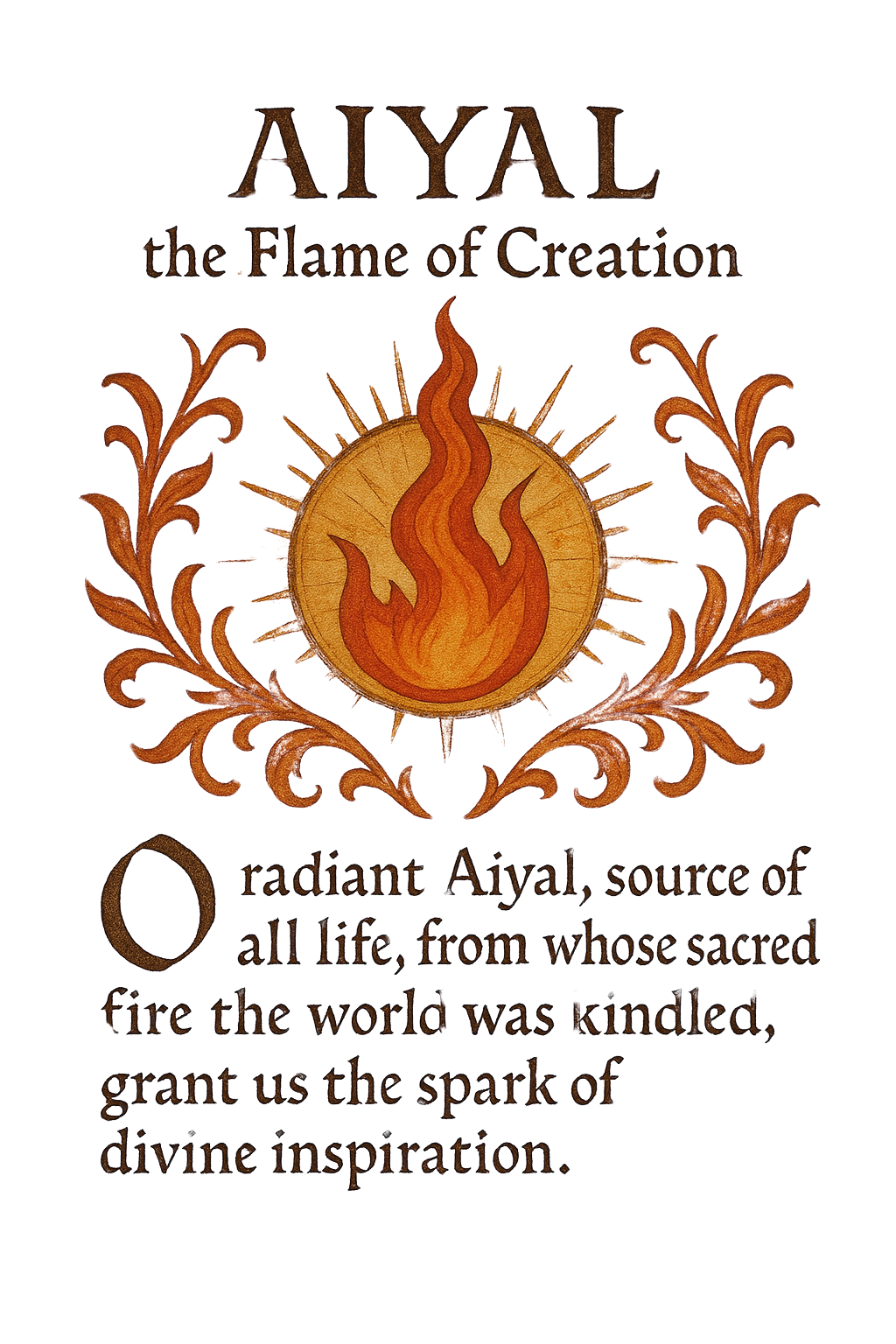
4
III. The Loom of Worlds
The Loom is not a place, but a principle. It is the weaving of being from non-being, the ever-turning pattern that births realities. Each thread is a law of nature, each knot a miracle, each tear a prophecy.
The first strand upon the Loom was Time. Not the ticking kind, but deep time—the breath of mountains, the rhythm of ages. Aiyal stretched it forward, Orun gave it measure, and Vael marked its end.
Next came Matter, heavy and slow, pulled from the Flame’s own body. The elements unfolded—stone and wind, flame and sea, bark and bone. The elements did not yet clash, for there were no hands to throw them. They simply were.
Then came Consciousness—a spark within the weave. The Flame breathed into it, and it awoke. Not yet gods, not yet mortals—these were the First Spirits, drifting embers of awareness that floated like pollen across the Loom, marveling at all that was.
A Reflection on the First Spirits:
The Hymns of Emberglass speak of these spirits as wanderers who never touched ground, who carried the memory of the Breath across all creation. When a child is born with flame-colored eyes, some say they are echoes of the First Spirits returned. These are not mere tales to warm hearths—records in the Ember Scrolls show such children often speak in languages never taught, and dream of stars not charted.
And yet, even these earliest souls could not stay unchanged forever.
5
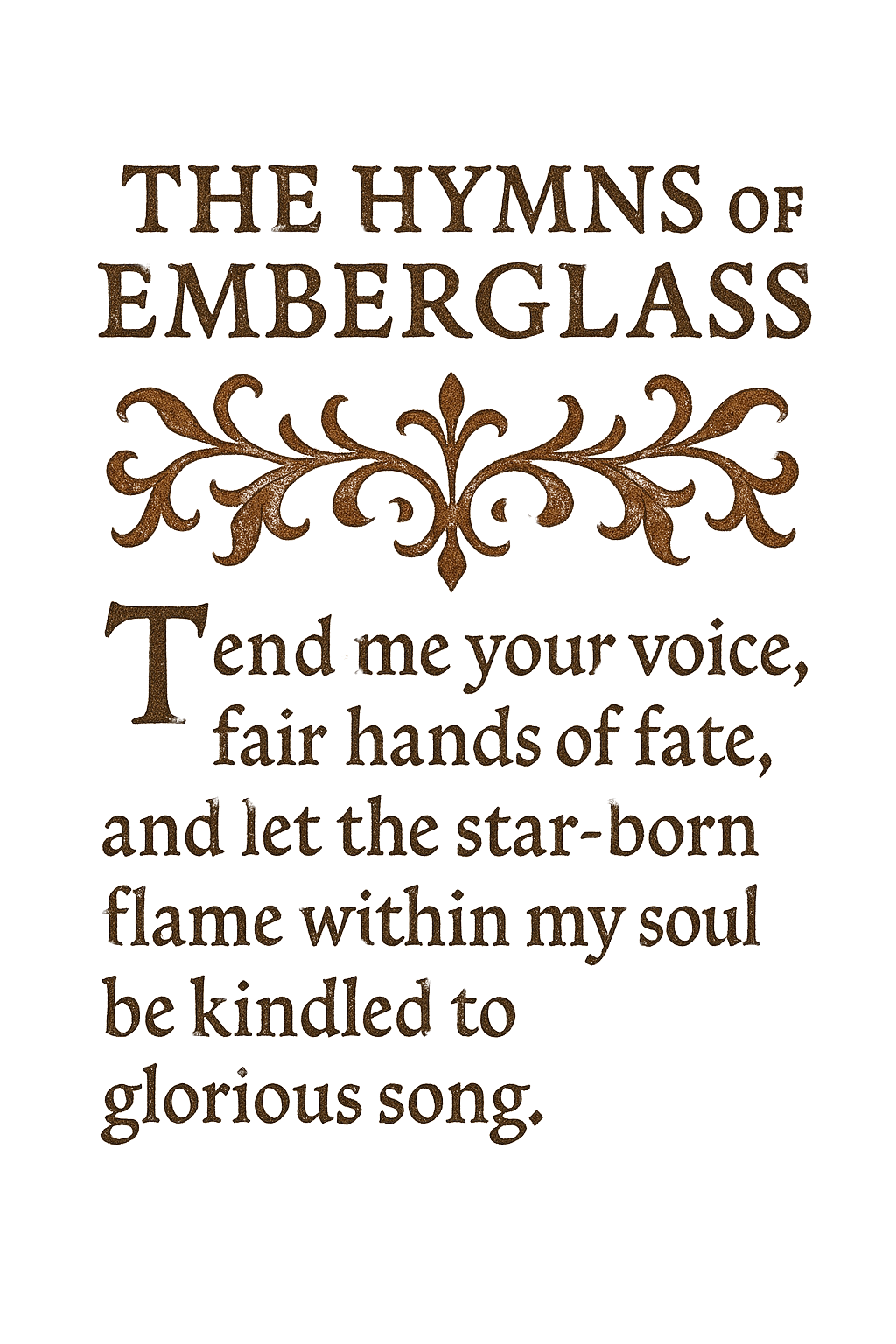
6
IV. The First Shaping
As the Loom turned, worlds took shape. Not just Elarion, but many. A thousand million dreams caught flame and cooled into form. Some were seas without shore. Others, endless stone. Some sang. Others wept. But only one became ours.
Elarion was not born of chance. The Threads tell us it was woven with intent—by whom, none agree. Some say Aiyal dreamed it while resting. Others, that Orun shaped it to test symmetry. There are even cults who say Vael wept it into being as a cradle for sorrow.
What we know is this: Elarion began as a great light, suspended in the firmament. A jewel of potential. And into it, the Threefold Flame breathed the Second Singing.
This Singing was not of Flame alone, but of contrast. Where once all was harmony, now came resonance and dissonance. It was not evil—evil had not yet dawned—but it was difference. Individuality. Choice.
From this, the first gods stepped forward.
But before they took name and form, before thrones or temples, there was the Hollow Note—a silence that followed the Second Singing. This is rarely spoken of, for it is unsettling. The Codex Virell says:
“The Hollow Note was the echo the Loom could not bind. It was not sung by the Flame, but by the Loom itself, in longing.”
Some theologians interpret this as the beginning of Death—not Vael’s gentle ending, but the rupture that would one day permit fear, cruelty, and malice.
Of the Hollow Note and the Forbidden Flame:
In the Archive’s deepest vault lies a sealed parchment, charred at the edges, known only as Ash Verse. It speaks of a Fourth Flame, exiled from the Song—a discordant force that wished to unmake rather than create. Some scholars call it myth-within-myth. Others, heresy. I record it here not to preach, but to preserve.
One line reads:
“It wished not to burn, but to devour the fire itself.”
Perhaps this is why we fear what lies beneath—why the darkest caverns and deepest seas stir such dread. The Hollow Note may not be gone. It may be waiting.
7
V. The Sanctity of Flame
All sacred orders in Elarion revere fire—not for its heat alone, but for its memory. Every flame is an echo of the First Flame, a living thread of the Breath. This is why hearthfires are never allowed to die within the walls of Kingswatch. Why every temple has a sacred brazier, and why the dead are given to flame rather than earth.
We do not burn to destroy. We burn to return.
The flame carries the soul—not upward or downward, but inward, to the Loom, where the spirit may be rewoven in time.
Some ask why we do not worship the Breath directly. The answer is simple: the Breath has no altar. It cannot be confined to statues or prayers. It is too vast, too silent. We revere its echoes, its children, its flame.
And in those moments, when a candle flickers against wind and does not go out—when a torch burns blue for no reason—when firelight casts shapes that speak to our hearts—we feel it. The Breath still sings.
8
Part II: Of Gods and the Dawning War of Meaning
Transcribed from the Sacred Codices of the Temple of the Threefold Flame, as compiled by High Archivist Elen Qirell of Kingswatch.
“The gods were not born. They stepped forth, as fire steps from flame, as thought follows breath.”
— Book of the Flameborn, Verse II:3
The tale turns now to the gods, the First Knowers, the Shapers who named the world even as it named them. It is not given to mortals to understand fully the nature of gods. We walk the paths they paved, drink from wells they dreamed into being, yet know them only in glimpses—as flame seen through fog, or music heard through stone.
The gods did not come after the world, nor were they its creators in total. Rather, they arose from the tension between Harmony and Dissonance born of the Second Singing. They are not omnipotent. They are not eternal. But they are woven into the Loom, as enduring as the patterns they carved into existence.
9
I. The First to Awaken
The first of the gods to rise from the Threads was Cirethon, called the Flame-Reader, the Eye of Light. It is said he opened his eyes in the heart of a sun and saw all the Loom at once. He did not shape, but he knew. His presence alone caused the Threads to ripple, and in his gaze, the stars first aligned.
With him came Tamariel, the Veiled Whisper, born of contrast. Where Cirethon shone, she cloaked. Where he proclaimed, she questioned. She was the space between words, the silence between drumbeats. She made mystery holy.
In their union—neither carnal nor spoken—arose the first great tension of the gods: Meaning.
The Loom trembled, for never before had there been interpretation. Where the Flames sang truth, now the gods asked: But what does it mean?
From this divine pondering came the Dawning War.
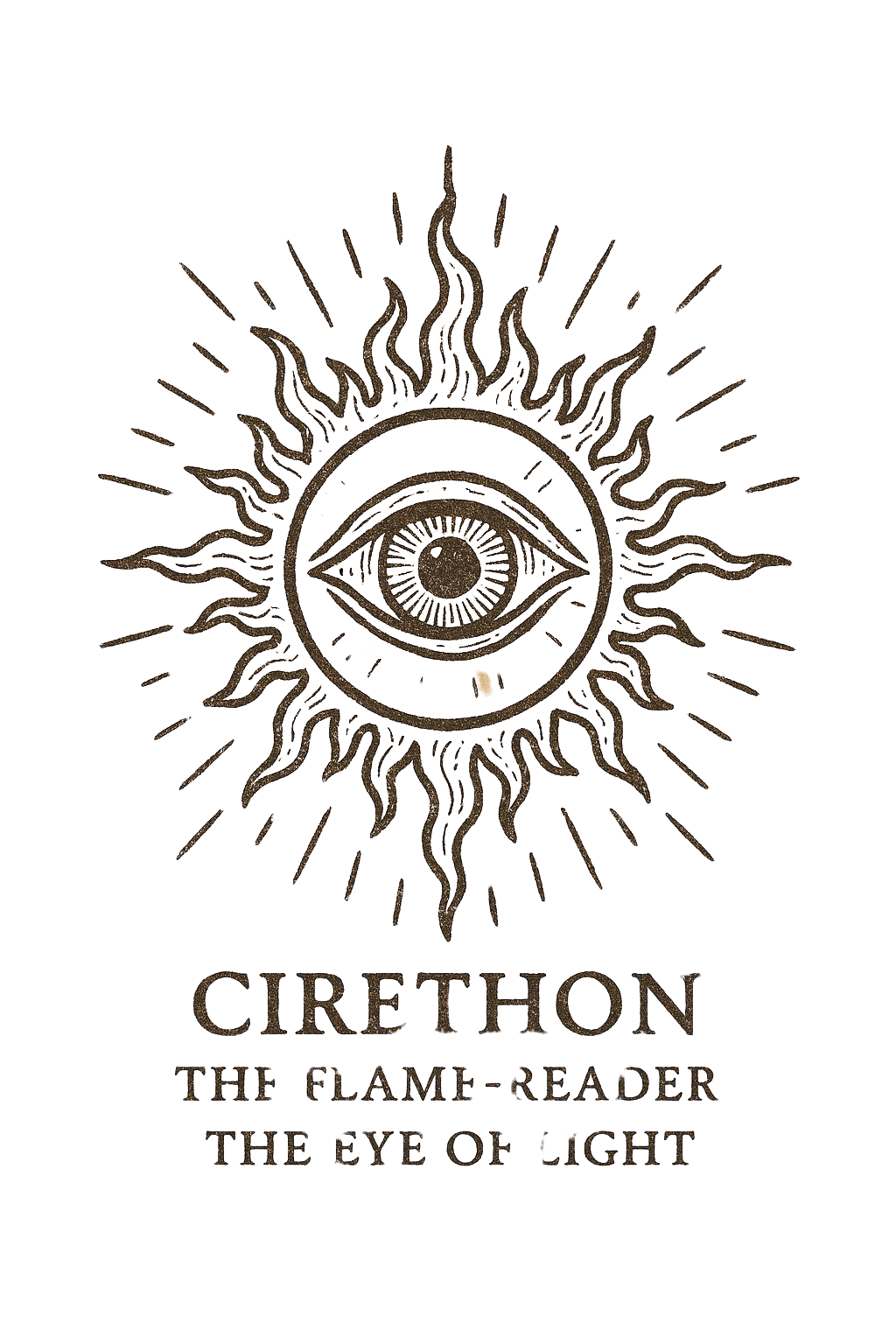

10
II. The Dawning War of Meaning
Do not let the word “war” deceive you. It was no clash of armies nor storm of blade and spell. The Dawning War was a war of intentions, of interpretations. Each god who awoke took a stance on what the Loom’s Song meant—and each shaped reality in the image of that belief.
Aestara, the Flame of Joy, believed the world was a hymn of beauty, and from her laughter came music, birdsong, and the curve of flower petals.
Morvhal, the Woundwalker, saw pain as the root of being. To him, all creation was a cry for release. From his shadow rose mortality, struggle, and the endurance of flesh.
Theryn, Twin-Gendered Seeker, claimed that meaning could not be known unless it was lived. They took mortal form and walked the fields of young Anhaldor for an age, leaving behind riddles etched in stone that even now have not all been answered.
These gods did not destroy—they overwrote. Realms shifted with each revelation, as the Loom bent under the weight of will. Mountains folded, rivers reversed, whole species rose and fell in the echo of divine disagreement.
The War of Meaning lasted no time at all, and also ten thousand turns of the Loom.
When it ended—if it ever ended—what remained was a world rich with contradiction. A world of paradox, beauty, suffering, choice.
And so, Elarion became our world.
11
III. The Pillars of Contradiction
The Dawning War left more than echoes. It seeded Pillars of Contradiction into the bones of Elarion—natural wonders that reflect divine discord. These are places where laws of reality falter, not because they are broken, but because they were disputed by the gods.
The Cavern of Two Winds, beneath the mountains of Ravelhym, blows north and south at once. Travelers who whisper a question into its mouth often hear an answer they were not prepared to receive—answers said to come from the Voice of Tamariel herself.
The Lake of Unfinished Reflections, near the border of the Weeping Barrows, shows one’s face as it might have been. Some see themselves older, others younger. Some, not human at all. Many pilgrims come away changed.
Such sites are not accidents. They are the remains of divine argument. They remind us that creation is not perfect—it is contested.
12
IV. The Godfallen
Not all who stepped from the Threads remained gods.
Some grew weary. Others doubted their own revelations. A few turned inward, unraveling themselves from divinity. These are called the Godfallen—deities who gave up their mantle and became something else.
Naevon the Gray, once the god of endings, chose to become mortal, walking the world in an aging body until he vanished into the Mistgroves. He left behind the Book of Last Names, a tome said to contain the true end of every being—though no one who has read from it has lived long enough to confirm.
Sierathe, goddess of clarity, saw too deeply into the Loom and grew mad. Her temples are all now sealed, for her oracles speak truths that drive mortals to despair. Yet still, her symbol—the cracked mirror—appears unbidden in places of prophecy.
The Godfallen are not reviled. They are feared, pitied, even revered in some heretical circles. For if gods can falter, so too must we tread carefully.
13
V. On the Worship of the Many
The gods do not demand worship, but they receive it nonetheless. Temples rose not at their command, but from the yearning of mortals to reach back into the mystery.
In Kingswatch alone, shrines exist for over three hundred divine names. Some are fragments of greater gods. Others may be mortal souls ascended into legend. The Temple of the Threefold Flame acknowledges seven principal divinities, but makes space for all.
Why so many? Because the War of Meaning never truly ended. Each interpretation births a new truth. Each truth, a new face of divinity.
We do not seek to know the gods in full. We seek to understand the questions they left behind.
And still, the Flame burns.
14
Part III: The Making of Mortals
“From the threads of the Loom, where gods once danced and stars were sown, the Flame cast sparks into the world. And those sparks—fragile, flickering—became us.”
— Book of the Flameborn, Verse III:1
The gods, for all their shaping and warring, could not walk the world alone. Their forms were too vast, their essence too potent. Their footsteps cracked the earth, their breath birthed storms. Thus came the next great wonder of the Loom: the making of mortals.
The gods did not create us in unity. No single hand shaped the First Ones. Instead, the mortal races were born where the divine threads frayed—where meaning overflowed, tangled, or could not be resolved.
We are not the children of gods. We are their questions made flesh.
15
I. The Sparks and the Clay
It is said that Aiyal, the Flame of Creation, first wondered what might happen if the threads were small enough to feel. She whispered to Orun, and he gathered dust and ash from the Loom’s edge. Vael watched, silent, but did not stop them.
From this meeting came the First Molding—not of a man or woman, but of possibility. A shape that could change, grow, err, love, fall.
These first mortal vessels were empty.
Then came the Sparks—flickers of divine essence cast from the Loom where the gods’ conflicts had scorched it. Each spark carried a fragment of will, hunger, sorrow, or wonder. When the sparks met the clay, souls were born.
Thus did the mortal races awaken.
16
II. The First Races
The earliest mortals were not divided by race or creed. They were simply alive—flame-born in flesh. Over time, as the threads settled, forms took hold.
The Eldenar, tall and ageless, arose first. Born of Cirethon’s gaze and Tamariel’s silence, they remembered the Loom more clearly than any other. Their cities shimmered like illusions, half-there and half-thought.
The Dwarinim, forged near the Stoneheart where Orun’s presence was strongest, came next. Their bodies were shaped for weight, for permanence. Their memories run deep, as if carved in veins of iron.
The Veyari, those now called humans, were born not from a single god, but from the clash of many. They are contradiction made flesh—curious, ambitious, breakable, brilliant. No race spreads farther. No race forgets faster.
There are others, too:
- The Nal’ari, who speak with stars and sleep beneath still water.
- The Grothek, born of Aestara’s laughter and Morvhal’s grief, who wear bark for skin and speak in seasons.
- The Eimari, lost to time, who once sang songs that shaped tides.
We are all born of frayed divine meaning. Our blood remembers what our minds have forgotten.
17
III. The Gift and the Curse
The gods gave no commandments. No laws. But one gift, and one curse, they did bestow: choice.
With choice comes joy. With choice comes cruelty. Mortals may build cathedrals—or light them ablaze. May speak truth—or twist it. This was the price of their freedom. And the gods, unable to undo what had been woven, stepped back from the Loom.
It is said that Morvhal wept. That Aestara sang. That Vael walked among the sleeping and whispered, “Now you are real.”
Some say the gods still guide us. Others, that they turned away. But the embers of their thoughts still burn in our hearts.
And in every firelit story, every whispered prayer, every blade lifted in defiance or devotion, the gods still listen.
18
Part IV: The Age of Stillness
“And the gods, having sung, withdrew their voices from the Loom. The world did not fall silent. It waited.”
— Book of the Flameborn, Verse IV:2
After the shaping of mortals and the quiet departure of the gods, the Loom did not cease. But its great movements slowed, and the threads settled into patterns deep and subtle. Thus began the Age of Stillness—an age not marked by fire or war, but by silence, soil, and slow becoming.
It is the least spoken of the Ages, for its wonders were gentle. Yet in its stillness, foundations were laid.
19
I. The Long Sleep of the Flame
Without divine upheaval, the world cooled. Storms lessened. Mountains ceased their weeping. Oceans drew inward, curling like cats into coasts.
The gods, having spoken the laws into being, allowed them to hold. No further shaping came from above. And so mortals, no longer dwarfed by divine presence, began to listen—to one another, to the wind, to their dreams.
It was during this time that the first Languages emerged. Not spells. Not songs of creation. But words. Words with meanings shared, meanings earned.
The Eldenar call this the Unwinding, when memory ceased being instinct and became story. The Dwarinim call it the Deep Hold, the time when thought was mined like ore. The Veyari, ever poetic, call it the Echo of the Last Note.
20
II. The First Cities
Civilizations began not with towers, but with firepits.
Circles of warmth where stories were told and fears named. Over time, stone walls rose around fire. Then homes. Then altars. Then roads.
The city of Nythir Alun, long buried beneath silt and ivy, was the first to keep time. It did so not with clocks, but with shadows cast by its obsidian obelisks—each marking a day when a flame had burned.
The Crystal Halls of Dorith-Kan, now vanished beneath the Teeth of Stone, were the first to teach writing. Their glyphs—angular, radiant—were carved not into tablets, but into memory glass said to sing when touched.
These were not golden empires. They were beginnings.
21
III. The Absence of the Gods
Many feared the gods had died, or abandoned their creation.
Yet dreams came. Flames flickered. Children were born with eyes of fire. The gods were not absent. They were quiet. They waited to see what their questions would become.
Priests of the still temples say this was a test. Scholars say it was inevitability. I say: it was mercy.
For in this age, we learned to shape ourselves.
22
IV. Seeds of the Next Song
Though it was an age of peace, the Stillness held its own sorrows.
The Grothek say the trees wept nightly for a century. The Nal’ari speak of a tide that rose to the sky and vanished. The Eldenar remember a shadow with no source that passed once across the moon and never returned.
Signs, all of them. Signs that the Loom had not ceased. That a new tension brewed.
The Age of Stillness ended not with a shout, but with a whisper heard across all Elarion:
“Awaken.”
Who spoke it? We do not know.
But the gods stirred. The Loom trembled.
And the next Age began.
23
Part V: The First Fracture
“It was not hatred that tore the Loom, nor ambition, nor even fear. It was certainty. When belief hardened, the weave could no longer bend.”
— Book of the Flameborn, Verse V:6
The Age that followed Stillness bore no name for many generations. Mortals feared to call it anything, as if speaking it aloud might summon its power once more. We now name it the First Fracture—the moment the Loom itself split beneath the weight of mortal will.
Until this point, all tension in Anhaldor had been divine. Even the Dawning War was a conflict of gods. But in the First Fracture, it was mortals who tore the threads.
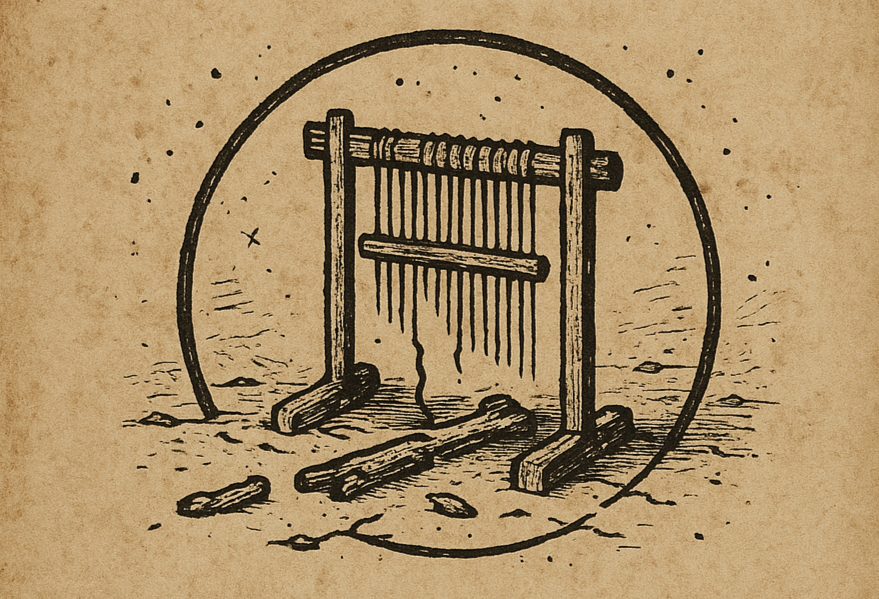
24
I. The Turning of Words to Blades
With language came poetry. With poetry came prophecy. And with prophecy came division.
Some claimed to hear the gods directly—visions, dreams, voices in sacred flame. Others believed truth was not inherited, but made through reason, law, or art. Still others turned inward, denying all gods but the flame that lived within.
Temples that once welcomed all faces of the divine began to differentiate. Walls were built not to protect, but to exclude. The Emberfast became mandatory. The Flame was no longer a mystery—it was a weapon.
And so the first wars were not for land or gold—but for meaning.
25
II. The Tearing of the Sky
The Codices speak of a moment when the sky itself cracked—a jagged silver rift that opened above the Vale of Sern. For three days and nights, stars bled light, and no fire would burn.
Theologians called it the Wound in the Loom.
It was not caused by gods, but by mortals who sought to bind the Flame—to give it form, command, and hierarchy. They built a tower of polished obsidian, tall enough to “touch the threads,” and within it, they chanted a singular truth: “There is but One Flame, and we are its voice.”
The Loom rebelled.
The tower was shattered. The land beneath it now lies black and lifeless, a place called the Glass Scar, where no birds sing and no echoes return.
Even now, when lightning forks in silence and leaves no thunder, we say: “The Scar remembers.”
26
III. The Shards of Truth
From the Fracture came shards—broken truths scattered like glass across the world. Cultures formed around them, each believing their shard to be whole. Some built cities upon them. Others hid them away in tombs. Some even swallowed them.
The Sapphire Veil, a sect of fire-dancers in the east, claims to embody the will of Aestara through joy. The Knotted Circle, hidden in forest monasteries, worships contradiction as the purest form of truth. The Burning Choir, feared across the coasts, chants their truth unceasingly, burning those who disagree.
All shards reflect the Loom. None are the Loom.
This is the danger. And the sorrow.
27
IV. The Return of Divine Footfall
When mortals tore the Loom, the gods stirred again—not in wrath, but in grief.
It is said Vael came first, walking silently through the Ashlands, leaving behind lilies that never wilt. Orun appeared at a forge in Kar Doram, wordless, reforging a broken blade with tears. Aiyal, it is whispered, whispered through the breath of newborns: “Choose again.”
This was not a reassertion of power. It was a reminder.
The Flame cannot be owned. It can only be tended.
The First Fracture did not end with victory. It ended with humility.
And so began the long journey toward healing—the Age of Emberlight.
28
Part VI: The Age of Emberlight
“Ash is not the end of flame, but the place from which it is reborn.”
— Book of the Flameborn, Verse VI:1
The Age of Emberlight did not begin with fanfare. No trumpets heralded its coming. It began in silence, in the quiet rebuilding after ruin, like breath returning to the chest after grief. It was an age of renewal, not conquest—of kindling rather than blaze.
Where the First Fracture shattered, Emberlight mended. Where the sky once tore, clouds began to drift again. And where faith had divided, new understandings took root like shoots in scorched earth.
29
I. The Kindling of New Fire
Across Elarion, firepits once used for war chants now burned for shared meals. The temples—those that remained—reopened their doors not with proclamations, but with questions. What does it mean to tend, not command? To listen, not decree?
The Order of the Listening Flame was founded during this time in the high spires of Valmere, its priests sworn never to speak for the gods—only to bear witness to the voices of others. They did not preach. They simply recorded.
And yet, their tomes filled faster than any before.
Mortals no longer sought dominion over truth. They sought to hold space for it.
30
II. The Gathering of Ashborn
Those who had survived the Glass Scar, the wars of belief, and the silence of the gods were called the Ashborn—not a race, but a recognition. These were the people who bore loss and still chose to rebuild. Their banners bore no sigils, only a single ember set in gray.
From the Ashborn came the Compact of Eight, a council made not of kings, but of elders, artisans, healers, and dreamers. They laid down no empire, but wove a network of Ember Halls—safe havens for story, song, and flame.
To light an Ember Hall fire was to declare: here, all questions may be asked, and none will be burned for the asking.
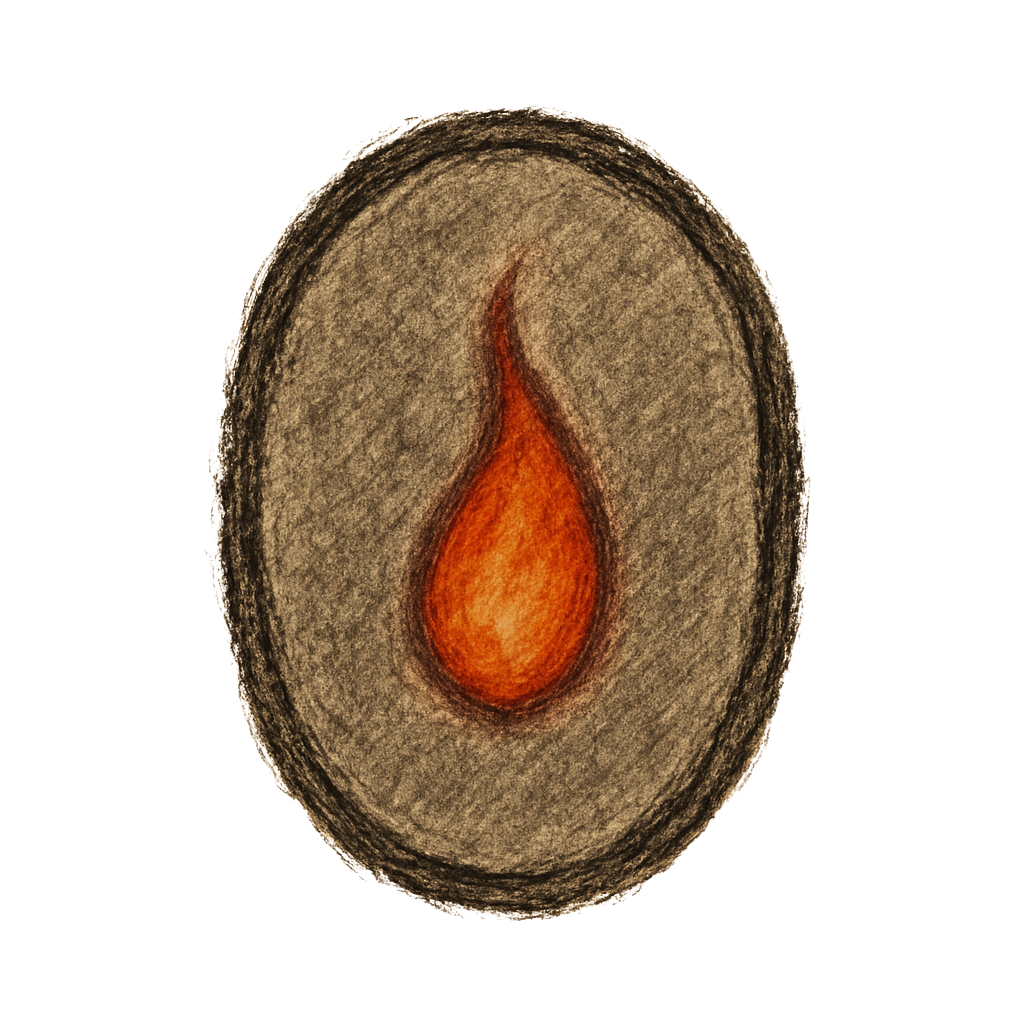
31
III. The Silent Pilgrimage
In the forty-fourth year of Emberlight, a curious phenomenon spread across the land. Without coordination or command, thousands began walking—alone, in silence, toward places of old ruin. They carried nothing but oil lamps, and they lit fires in the bones of shattered temples, forgotten cities, even the charred roots of fallen forests.
This was called the Silent Pilgrimage, and to this day, no one knows what began it. Some say it was a divine whisper. Others, a collective ache. But wherever a fire was lit, communities rose again. And in many of those places, the Flame spoke again—in dreams, in omens, in visions.
Not with answers. With presence.
32
IV. Embers in the Blood
In time, children were born bearing strange gifts—sight beyond sight, flames that changed color with thought, voices that harmonized with firelight. These were not blessings nor curses. They were called the Emberborn, and they were seen as reminders that the Loom still lived.
Some Emberborn became lorekeepers, others healers. A few vanished into the wilds and became myths themselves. One, it is said, became the wind that sings in mountain passes, though this is likely poetic invention.
The Temple of the Threefold Flame does not canonize these tales. We preserve them.
For in each, a spark lingers.
33
V. The Loom Sings Again
The Age of Emberlight ends where the next story begins.
It does not conclude with triumph or catastrophe. It concludes with harmony, delicate and trembling, like a chord slowly resolving.
The gods do not walk openly, but they are present. The Flame does not shout, but it warms. The Loom does not scream, but it sings—not the thunderous anthem of creation, but a quiet melody threaded into every heartbeat, every hearthfire, every voice lifted in story.
And in that song, the world is reborn.
34
Part VII: The Threads Unseen
“Not all that shapes the world is visible. Some threads are wound in silence, stitched in shadow, waiting for hands that do not tremble.”
— Book of the Flameborn, Verse VII:4
There is a danger in peace. Not in its presence, but in the illusion that peace is permanence. The Age of Emberlight had brought harmony, yes—but beneath that harmony, the Loom continued to turn, and not all threads gleamed with gold.
This is the story of the Threads Unseen—forces that stirred beneath the surface, veiled from prophecy, hidden even from gods. They are not evil, for evil is too simple a word. They are unread truths, forgotten questions, paths not taken but still waiting.
35
I. Whispers Beneath the Weave
The first signs were small: flickers in memory, dreams that seemed shared between strangers, songs heard in places where no singer stood. The priests of the Listening Flame began to report echoes—words they had never written appearing in their tomes, symbols that had no known root.
Scholars called this the Resonance Drift—a phenomenon of the Loom expanding inward. Others believed it the touch of a god not yet named.
But the most enduring theory is this: that not all threads were woven into the world. Some were left behind, curled like sleeping serpents, awaiting a future that would rouse them.
These are the Threads Unseen.
36
II. The Fourth Flame?
Among the sealed scrolls of the Ember Vault lies a forbidden text: the Ash Verse, long suspected to speak of a Fourth Flame.
Where Aiyal births, Orun binds, and Vael ends—this Flame does none. It is said to be the flame of revision, of return, of undoing.
It is not chaos, for chaos is raw. This is deliberate.
Some say this Fourth Flame walks among us still, wearing mortal skin. Others say it is the sum of every choice never made, every road abandoned. If the Loom sings, then this is the note it dares not strike.
And yet, the echoes grow louder.
37
III. The Gathering of the Pale Hand
Not all who listen seek warmth. In the shrouded valleys of Fenraith, a movement known as the Pale Hand began collecting forgotten relics—shards of the Fracture, lost verses, embers that would not die.
They do not preach. They remember.
Their symbol is a hand of ash cupped around a dying coal. Some believe they await the return of the godfallen. Others claim they seek to finish the song the gods abandoned.
Whatever their purpose, their presence unsettles. For where they pass, dreams stir, and the Loom’s threads shiver.
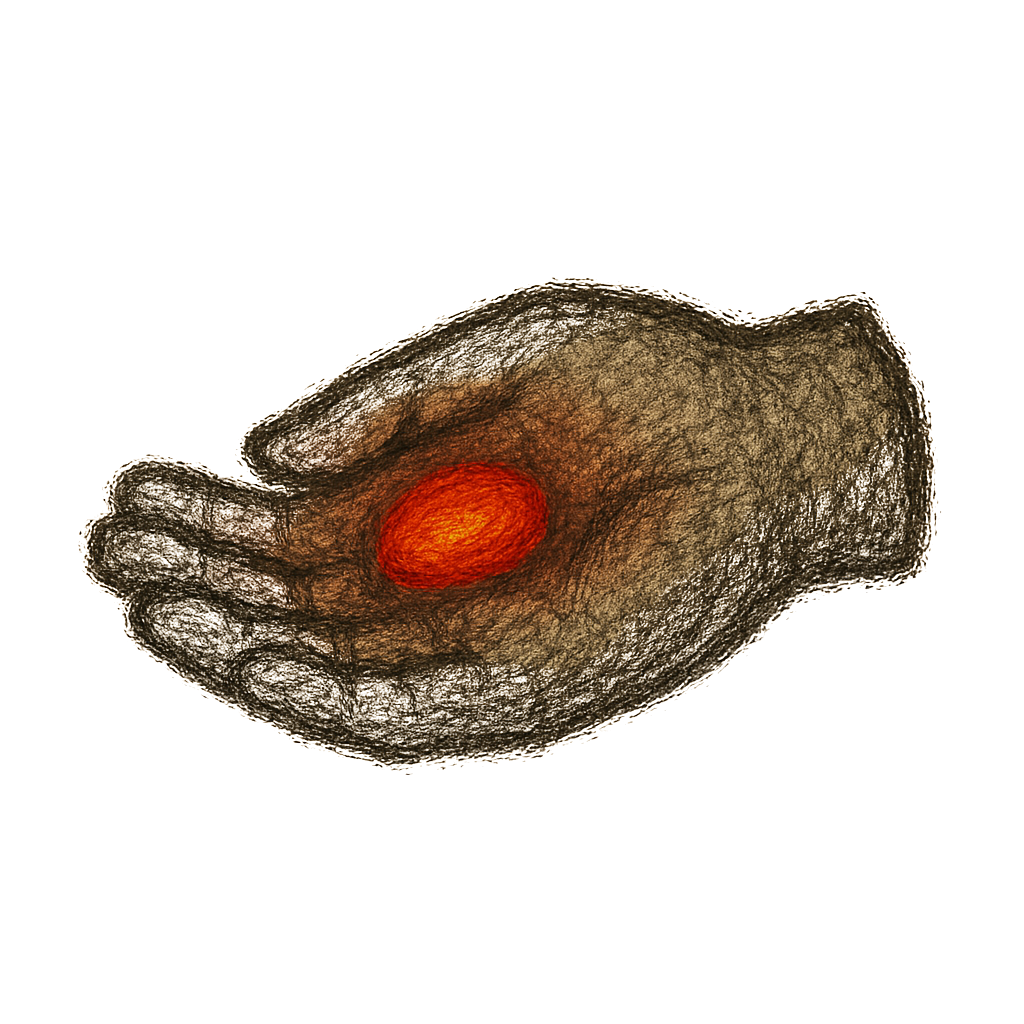
38
IV. Prophets Without Names
In the last years of Emberlight, a new kind of prophet emerged—those with no past, no name, and no memory. They wandered from place to place, speaking truths that felt familiar yet unverifiable.
Some say they are echoes given flesh. Others, the Loom testing its next pattern.
One such figure, the Child of Coals, appeared in eight cities on the same night. In each, they whispered: “The thread is fraying.” Then vanished.
They left behind no footprints. Only warmth.
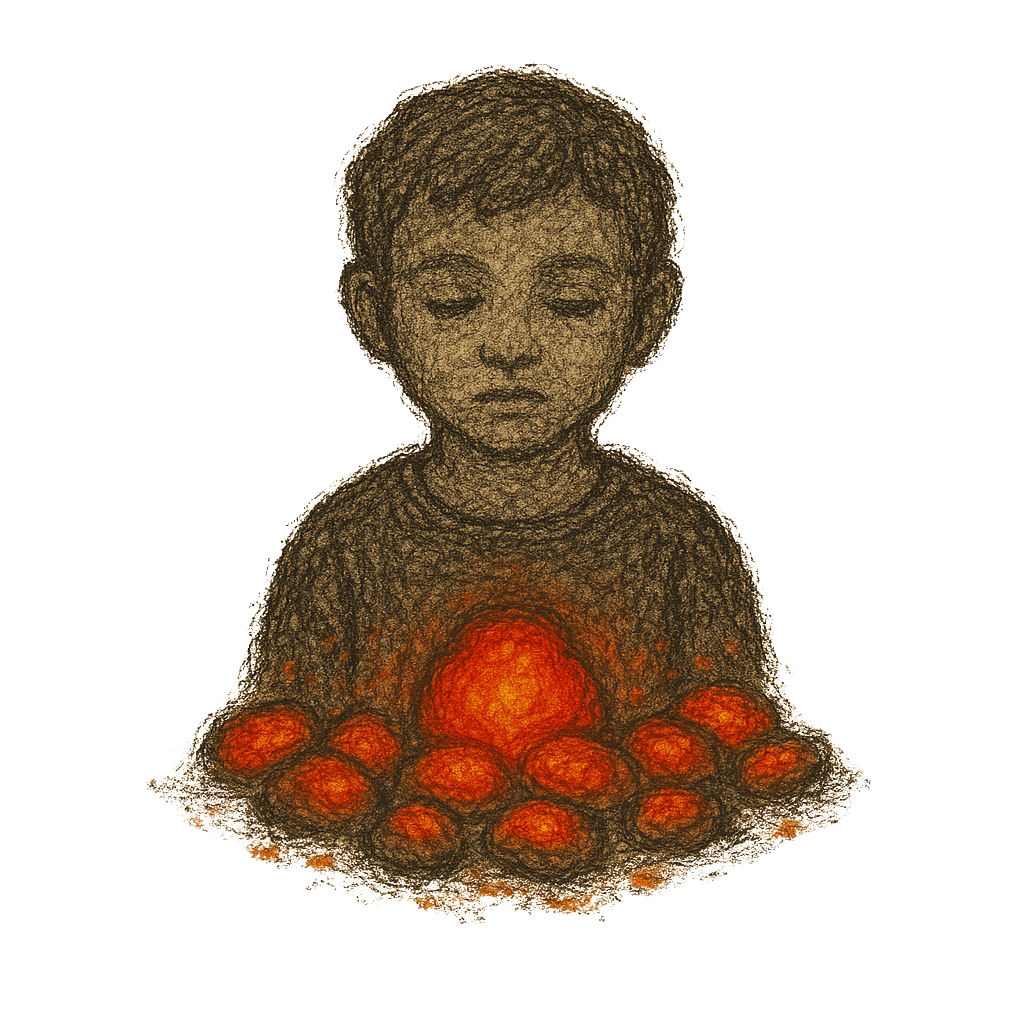
39
V. The Loom Breathes Inward
What comes next, we do not know. The Threads Unseen do not herald war or glory. They bring uncertainty, introspection, awakening.
Perhaps the Loom is not merely a tool of the gods, but a being unto itself—a living pattern that desires not completion, but evolution.
Or perhaps this is the final gift of the gods: to step so far back that we must become the weavers.
One thing is certain:
The world is not finished. And neither are we.
40
Epilogue: The Ember Within
“When the last page is written, the flame does not die. It waits, curled in the margins, humming softly, ready to ignite again.”
— Final Annotation, Temple Copy 3 of the Codices
If you have come this far, reader—whether acolyte, scholar, wanderer, or dreamer—know this: you are a thread in the pattern. Perhaps a small one. Perhaps knotted or frayed. But no less vital than the stars, the gods, or the First Flame itself.
The Breath that once sang into silence still lingers in all things. In the way a candle sputters at dusk. In the hush before a word is spoken. In the warmth that touches your chest when you recall something sacred.
I have written these Codices not as commandments, but as reminders. That the world was made in mystery, tended in conflict, fractured in certainty, and healed in humility. And now… now, it waits again.
The next song has not yet been sung.
Perhaps it waits for you.
So go. Speak kindly. Question deeply. Tend the flame, but do not cage it.
And when the night grows cold, remember: all fire begins with a whisper.
— Elen Qirell, final entry as High Archivist of Kingswatch, sealed in the 717th Turning of the Loom, beneath the Emberlight Moon
41
